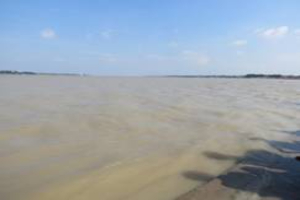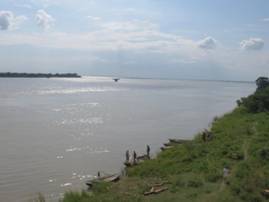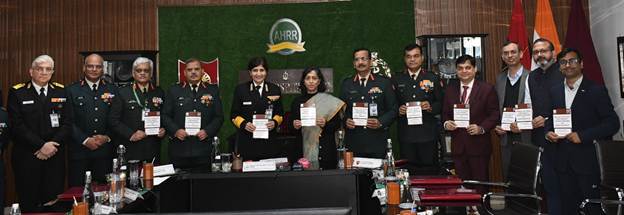
Kanpur: Water quality is a particularly major concern in the densely populated (390 people per square km) and heavily polluted Ganga Basin, home to 0.4 billion people.
The resilience of dissolved heavy metals, nitrate (NO3–), and phosphate (PO42–) concentrations to short-term human actions is still unknown so far as Ganga is concerned, while previous studies of the Ganga Basin have produced a rich body of information about the river water. They are about the role of bedrock weathering processes in river water composition, land to ocean sediment and chemical fluxes, and the status of typical water quality parameters, namely, chemical and biochemical oxygen demand (BOD and COD, respectively), dissolved oxygen (DO), pH, total coliform (TC), and fecal coliform (FC), highlighting the importance of silicate–carbonate rock weathering in river chemistry, the effect of land to ocean chemical fluxes on marine records, and the importance of wastewater pathogens in the river basin, respectively.
 Concerns have also been raised about increasing concentrations of dissolved inorganic constituents, including the toxic heavy metals, and their impact on water quality and river ecology.
Concerns have also been raised about increasing concentrations of dissolved inorganic constituents, including the toxic heavy metals, and their impact on water quality and river ecology.
The COVID-19 pandemic lockdown provided the a team of scientists from Indian Institute of Technology, Kanpur a rare opportunity to quantify the impact of restricted anthropogenic activities on the water chemistry resilience of large rivers. As the lockdowns resulted in a complete shutdown of industrial operations, the effluent discharge from various industries was negligible. This industrial discharge usually ends up in nearby water bodies and groundwater despite India’s stringent “zero liquid discharge” laws preventing discharge of untreated effluent in rivers.
It was estimated that industrial wastewater contributes nearly 20% of the total volume of wastewater generated in the Ganga Basin and its near absence was undoubtedly a rare opportunity to quantify the resilience of water quality parameters.
The scientists analysed the daily geochemical record of the Ganga River and showed that reduced industrial discharge during 51 days of mandated nationwide lockdown decreased the dissolved heavy metal concentrations by a minimum of 50%. In contrast, inputs from agricultural runoff and domestic sewage like nitrate and phosphate remained almost the same as these sources were not impacted by the nationwide confinement.
Their study showed that efforts to minimise industrial wastewater can substantially reduce heavy metal pollution in the Ganga water in a short time span of a few months, and the scientists concluded that the Ganga River has a high resilience toward dissolved heavy metal concentrations and that the river system would revert toward pristine dissolved heavy metal concentrations in a short time span of a few months following reductions of industrial wastewater discharge.
“We further emphasise that COVID-19 lockdown improved only the dissolved heavy metal load of the Ganga River, and not all the vital parameters of river water quality, as claimed previously.(29) Therefore, the statement that the COVID-19 pandemic improved all water quality parameters of the Ganga river is incorrect, and the different pollutants should be considered individually,” the scientists said in their report.
The research was supported by the Indo-U.S. Science and Technology Forum (IUSSTF), a bilateral organisation under the Department of Science and Technology (DST), Government of India and U.S. Department of States, and recently published by ‘Environmental Science and Technology Letters’, showed the high resilience of dissolved heavy metals.
The study, which adds to the body of research of world’s large rivers have been intensely studied to better understand the impact of climate change and direct human interventions on river water quality and quantity has found pace in the cover page of the journal.
– global bihari bureau






Hi! Someone in my Myspace group shared this site with us so I came to check it out. I’m definitely enjoying the information. I’m bookmarking and will be tweeting this to my followers! Great blog and fantastic style and design.